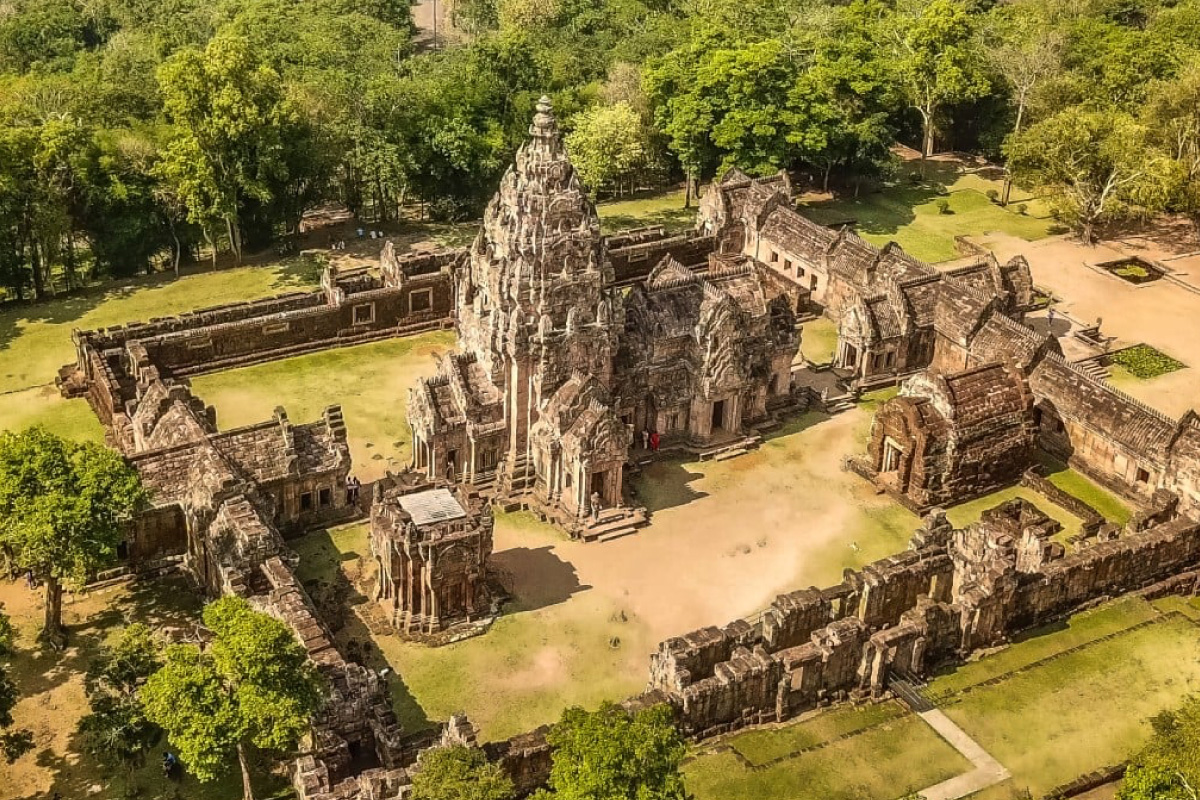
Esan Girl : Real Thai Beauty, is an art project that celebrates the natural beauty of Esan through female figurative paintings of real-life girls from Esan. Esan sits at the centre of the project because of the special beauty of Esan girls, the natural beauty of the northeast countryside, and Esan’s unique history, culture and people. Through the project, we hope to reveal some aspects of this very special place.
Esan, the Northeast region of Thailand is a “big country”, a larger-than-life place of extremes, a land of ancient history, a place defined by its location, its geography, its weather, and its people. It comprises 20 provinces, is home to 22 million people, and covers an area the size of Spain. It is Thailand’s largest region. It sits on the enormous Khorat plateau, bordered by the Mekong River to the north and east, by Cambodia to the southeast, and the Phanom Dong Rak mountains south of Nakhon Ratchasima. It is a vast land, 155000 square kilometers, spread across two great plains, the southern Khorat plain, and the northern Sakhon Nakhon plain. It is an undulating land of rice fields, gentle hills, and 22 national parks, largely forest. It is shaped by water, its magnificent rivers (the Mekong, the Mun, and the Songkhram), and its mighty lakes (Nong Harn and Talay Bua Daeng). Esan experiences extreme weather, intense heat and heavy rainfall. The economy is largely agricultural, based on small family-owned farms, with sticky rice being the most important crop.
Esan history is complicated and has been determined by its location and geography. It is the Northeast border region of contemporary Thailand, Laos and Cambodia. Its history has been dominated by its 3 neighbors. While the geographical border of the Khorat plateau has remained unchanged, country borders have changed regularly with the rise and fall of various kingdoms.
The Mekong River area of Esan was first settled more than 6000 years ago. It is one of the the oldest areas of human civilizations in Southeast Asia. Several important archeological sites have been discovered in Esan. Ban Chiang 5000 years old, and a UNESCO world heritage site, contains some of the most important Bronze Age pottery found anywhere. Cliff paintings at Pha Taem and the rock paintings at Pha Phak Wan both date back more than 3500 years.
The first major civilization to emerge in Esan was the Dvaravati, a medieval Mon principality, dating back 1500 years ago, The Dvaravati empire was replaced by the the Khmer Empire of Angkor, a Hindu-Buddhist kingdom, that existed between AD802 and AD1431, known as the Angkor period. The Khmer Empire is regarded as one of the greatest and most important civilizations in human history. Angkor, at its peak, was the largest urban complex in the world. Esan has a glorious, majestic and ancient past.
Esan people are an ethnic group native to Northeast Thailand, combining elements of both Lao and Thai ethnicity. The region has its own distinct and unique cultural identity, represented through its language, food, music, festivals, temple architecture, arts and clothing. You can travel anywhere in Thailand, and know, instantly, if someone is from, Esan. Esan is the Land of smiles.

Esan today stands as one of the most important but least visited regions of Thailand. It offers an unspoilt tapestry of lush rice paddies, winding rivers, vast lakes, and ancient ruins. For many people, both Thai and foreign visitors, it offers a view into “the real Thailand”, based on traditional agricultural village communities, subsistence rice farming, and multi-generation households. Much of the economic activity is non-industrialised. Esan life is sustainable living, it preserves the natural beauty of the land. Esan life represents an alternative to contemporary urban life. It is a way of life that avoids many problems the developed world is struggling with – intensive farming, pollution, excessive urbanization, technology overload, mental health, and the erosion of civil society. At its best, Esan is a place of great natural beauty, where nature reigns supreme, and its people work in harmony with the land. It is a window through which we can see how to live our best life, A place where we can understand what it means to be human. It is as close to earthly paradise as we can find anywhere.
Over the past 100 years, with formal policies to increase the integration of Esan into modern day Thailand, Esan people have become an integral part of modern Thailand. The region has has produced several of the most notable Thai prime ministers and political leaders of recent times. Some of Thailand’s most significant business leaders and entrepreneurs grew up in Esan. Every day, Esan people do much of the essential work in farms, factories, hotels and offices that drive the Thai economy. Esan has produced some of the most important Thai artists, some of the most successful Thai musicians, and many of the country’s greatest sports men and women, including its superstar thai boxers.
Esan is remarkable place that has so much to offer. But while Thailand tourism has boomed in the past 50 years, Esan remains largely undiscovered. But things are changing, and now the world is starting to discover this remarkable place. Esan Girl is a celebration of the beauty, the culture and the people of Esan. Hopefully, it will inspire more people to learn more about this remarkable place.
